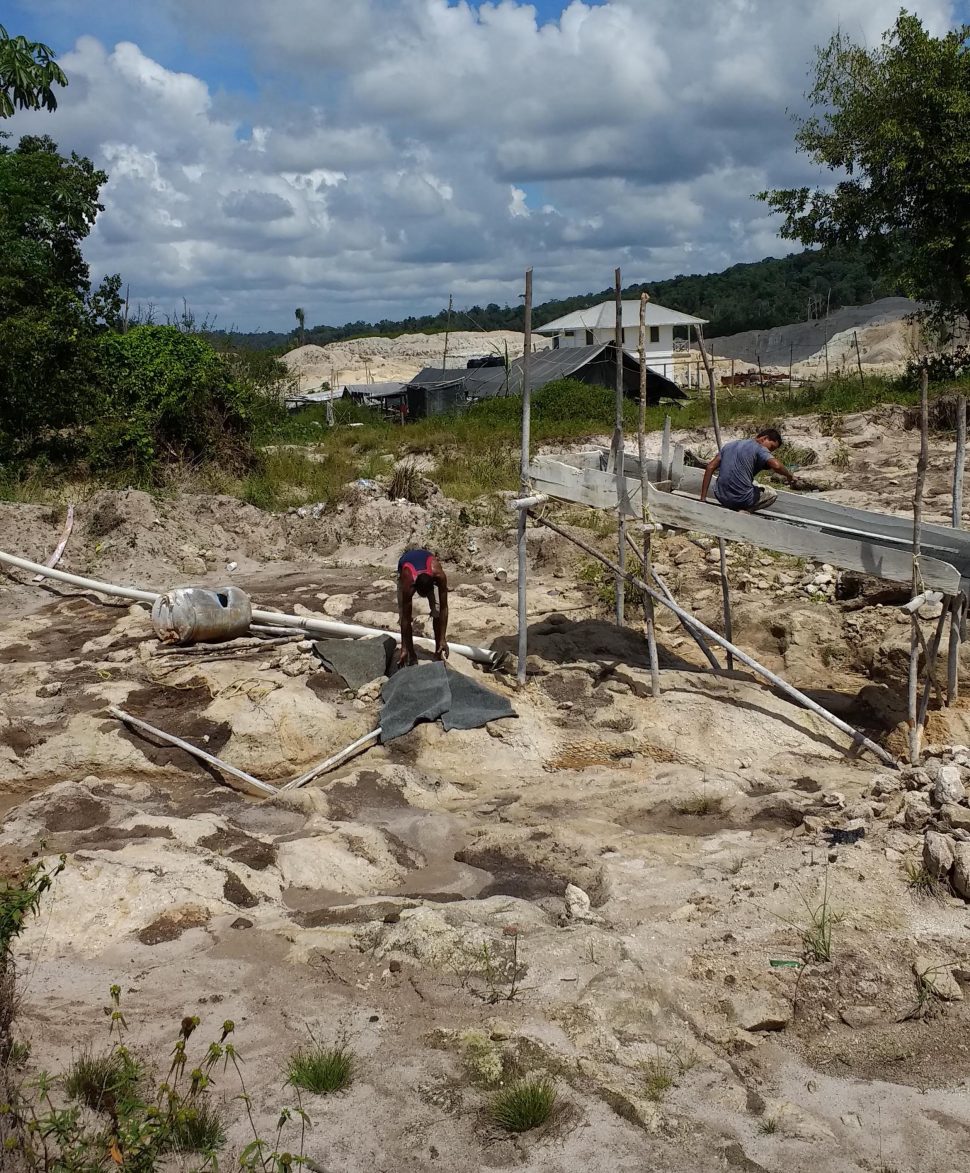Guyana is one of a number of countries in the hemisphere that continue to be affected by illegal gold mining and the unregulated movement of gold out of the country which, in the instances of some of the affected countries, are linked to organized crime the returns from which could exceed even those extracted from the cocaine trade.
This newspaper has seen a January 2018 article (titled “Organized Crime and Illegal Gold Mining in Latin America authored by Eva Brunner and Ricardo Grande and published by the US- based non-profit organization Global Americans) which names Guyana as an affected country in the broader hemispheric practices of illegal and informal mining much of which, it says, is linked to criminal activities though it does not specifically name Guyana as one of the countries whose gold-mining industry is specifically linked to international crime.
According to the article, gold has now been embraced as a key element in the profit-driven motivation of hemispheric criminal gangs largely on account of the United States’ so-called “war on drugs”………… and the drastic increase in the price of gold (between 2002 and 2012 gold increased by 500% worldwide) which it says has made illegal gold mining more profitable in Latin America than drug trafficking. According to government estimates, the industry generates about US$2.4 billion a year in Colombia.
Latin America, according to the article, “leads the world in the illegal extraction of gold while Guyana’s western neighbor, Venezuela, leads the hemisphere in this practice with an estimated 90 per cent of its gold being extracted illegally”. In recent times, gold mining-related tensions have arisen across the border between Guyanese and Venezuelans arising out of reported criminal raids on Guyanese mining installations on this side of the border.
Here in Guyana, while logistical challenges and underdeveloped monitoring of resources make it difficult the determine the amount of gold being extracted and/or exported illegally, it is known that the practices exist.
Early in 2016 the government here sought the support of the US Federal Bureau of Investigation (FBI) in a probe into what Natural Resources Minister Raphael Trotman said was the illegal movement out of Guyana of around 15,000 ounces of gold weekly, though those reports have never been linked to broader hemispheric criminal activity. Trotman had said at the time that the clandestine outward movement of gold from Guyana was occurring through a number of ports on its way to the United States, Brazil, Suriname and Europe.
Since the 2016 disclosure, however, there have been no details forthcoming from government regarding the continuity or otherwise in the practice nor have there been any reports regarding progress or otherwise arising out of the support that had been solicited from the FBI. Trotman had said at the time that an estimated 50% – 60% of Guyana’s gold production was being smuggled out of the country and that local law enforcement had been seeking to tighten the loopholes though it is widely believed that the remoteness of Guyana’s gold-bearing regions and the substantive weaknesses of law enforcement make the confrontation an unequal one.
Much more would appear to be known about criminal links between gold mining and criminal activity in Colombia, for example, where, according to the article, the Colombian security services had reported as far back as 2011 that 50% of the mines in the country were dominated by armed groups, guerrilla organizations and criminal gangs that have minimal participation in mining activities but collected ‘taxes’ from the operators. It says that initiatives by hemispheric governments to remove criminal gangs from the sector have been met with responses that bring to the fore all of the experience and capacity that had been realized through the earlier drug trade. An estimated 68 tonnes of gold worth around US$3 trillion are believed to have been extracted from the Amazon region.
Criminal interest in gold production, the report says, has had the effect of further shoving aside mining regulations (which were previously being honoured in the breach, anyway) as well as social and humanitarian considerations that ought correctly to obtain in mining communities. According to the article the increase in the use of mercury and the attendant environmental damage “are evidence of the uncontrolled (hemispheric) mining boom.”
“The clandestine extraction of minerals,” the article says, “is a quick shortcut for criminal groups to launder money. But even worse, illegality too-often overlaps with violations of human rights. Trafficking in persons, sexual exploitation, child and adolescent labour or loss of food sovereignty as a result of the abandonment of agricultural activities are just some of the direct consequences of illegal mining. There has also been an increase in violations of women’s rights: intra-family violence and economic dependence,” it adds. Significantly, many of these deviant developments attended by an upsurge in violent criminal activity have manifested themselves in the gold mining sector in Guyana.
While, according to the article illegal mining does not affect all states equally, in the Amazon region all countries are at risk. “Deforestation of many protected forests, and the damaging of important water sources, along with mercury as the chemical used to separate gold, adds to the pollution problem. It is estimated that for each kilo of gold produced, about 1.3 kilograms of mercury are released, polluting water sources and human populations that consume water and fish. And while the ban on mercury exports by the European Union and the 2017 advent of the Minamata Agreement have served as initiatives designed to “obstruct the illegal acquisition of mercury” its impact so far has been strictly limited, especially in border areas.





